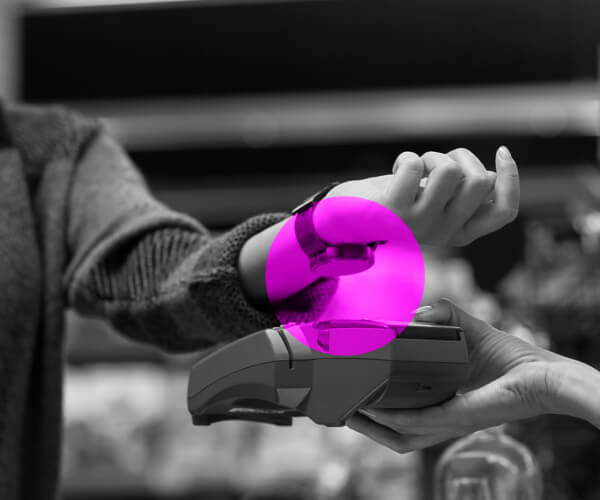Digital Retail Presents Real Challenges that Behaviorally Can Help You Overcome!
The retail world is decidedly digital, and our clients have shared their challenges to manage product data content at e-commerce retailers and ensure their PDPs are compliant, effective, and helps to drive sales. We hear you! And we have chronicled your challenges in our e-book that addresses Ten Pain Points in E-commerce to Overcome.
Challenge #4 is that your PDP is leaving money on the table!
PDPs drive conversion, but you have no idea which content makes a difference. How do you know what is working or what to improve?
Most e-commerce metrics indicate the continuing acceleration of online retail adoption with projections for growth for the foreseeable future. It is, therefore, problematic to think of success on the digital shelf coming down to a guess and gambling metaphor. But many e-commerce marketers have that sinking feeling that even if they do everything right (according to e-tailers’ rules), it is still a roll of the dice whether their product content will influence shopper choice.
As discussed in our previous posts, the rules are complex, extensive, and differ by category and retailer. Where guidelines for best practices exist, they may define the technical parameters for content (number of words for text and size of pictures by pixels).
PDP Pages Should Have A+ Content (Whatever That Means)
One example is the information that Amazon publishes regarding with they refer to as “A+ Content.”Adding A+ content to your product detail pages can help result in higher conversion rates, increased traffic, and increased sales when used effectively.” Amazon’s guidelines for producing A+ content includes suggestions like:
- Enhanced Product Description – More details on product features and uses to augment the bullet points and images in the main product detail page. These help customers make purchase decisions by proactively answering their questions.
- Custom paragraph headers and images
- Unique image and text layouts
- Product comparison charts
- Bulleted feature lists
- Appears in the Product Description section of the Amazon detail page
- Brand Content– Educate customers about the history of the brand, as well as its values and product lines.
- Carousel display with full screen background on desktop and mobile devices
- Image and text cards
- Links to other products and the brand store
- Appears in the From the Brand section of the Amazon detail page
You can publish content to all ASINs that you own as a registered brand owner in Amazon Brand Registry, and have up to 20 pending submissions in review at one time.”
These don’t give the average e-commerce marketer much to go on.
PDP Content Optimization Tips Are Lacking
There is no clear guidance for optimization of content based on any norms applicable to images and how consumers see and choose products to purchase.
In a Forbes article from July of 2021, Nick Heethuis, founder of an Amazon marketing agency, admonished would be Amazon merchants for poor image quality:
“Your main image should be a crystal clear, high-resolution image of your product on a white background. The image should be a minimum of 1,000 pixels by 1,000 pixels so shoppers can zoom in on the image.
Aim to create a “scroll stopper” main image — one that’s so compelling, it’s able to stop a shopper scrolling through dozens of listings and eagerly click into your listing to learn more.”
What exactly makes an image compelling and “scroll stopping”? Until now, there has been conjecture, preference, and opinion, but with so many elements to manage in the PDP process, no time or tools for real effective measurement.
A/B Testing the Digital Shelf
The gold standard for many things digital has been the A/B test (and we will talk about that extensively in a future post). Still, it is problematic in the extreme when it comes to determining WHAT needs to be fixed or optimized for the images consumers see on the digital shelf. And to even do measurement at the scale of demand for digital optimization requires powerful computation and a large database of pre-validated images to measure against. Not to mention clear KPIs to tell you what and how to fix what isn’t working.
One of our industry colleagues, Adrian Sanger, Director at Spinsight Consulting in the UK, puts it this way:
“The e-tailer guidelines will give you a tick list of things that you need to follow, [the product image has] got to have the product name, how many units are in the respective SKU, you’ve got to be clear about the variant.
“Once you’ve done that, you [have a] compliant image, safe for search on most of these platforms. But for sure, that doesn’t make it a good image.” The guidelines don’t provide instructions for choosing an image that shoppers will see and feel compelled to choose. “And that’s where we think the opportunity lies: trying to go beyond the more basic guidelines and provide more direction to our clients around whether their image is fully optimized, and if it isn’t, how we go about optimizing it.”
So, e-marketers face the challenge: How can they upgrade from guesses, and gambles to givens when it comes to populating their PDPs with winning images?
The Solution? Flash.PDP™!
Behaviorally is the leading digital partner to help brands drive shopper growth. We know these challenges exist for our clients on e-commerce teams who want to win in digital retail. So, we developed a solution that leverages visual recognition AI, our extensive database of shopper marketing content, our unique behavioral framework, and decades of category expertise. Introducing Flash.PDP – an always-on alert system to identify and optimize product images on the PDP that will convert to sales and drive shopper growth. Our new tool addresses category and retailer-specific metrics that provide easy, efficient ways to monitor and optimize images to increase sales.
To learn more, contact a Behaviorally digital retail expert today here.
